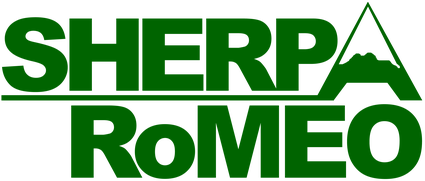DIFICULTAD RESPIRATORIA EN EL RECIEN NACIDO
DOI:
https://doi.org/10.55204/trc.v9789i8788.50Keywords:
SALUD, MEDICINA, PATOLOGÍASAbstract
La dificultad respiratoria en el recién nacido o su sinónimo distres respiratorio de tipo I (SDR I) también llamado hace algunos años como enfermedad de membrana hialina, considerada una patología común en la UCIN a nivel mundial. Dicha patología se evidencia en un numero de 10 de cada 100 nacidos prematuros, siendo la mayor incidencia en los menores de 34 semanas de edad gestacional , género masculino y con bajo peso al nacer.
Siendo el peso al nacimiento un “indicador" de pronóstico, pero recordar que no siempre reflejara la madurez de un neonato. Al analizar los resultados por grupo de peso, los prematuros extremos presentan variaciones dentro de la misma clasificación , tal vez influenciados por la diferencia en la madurez alcanzada.
Downloads
References
Santamaria R. Sindome de dificultad respiratoria tipo I. Salud en tabasco. 2018;8. Disponible en: http://www.redalyc.org/pdf/487/48708306.pdf
Grzona ME. Prematuros Extremos: ¿Es Posible Establecer Un Límite De Viabilidad? Acta Bioeth. 2006;12(1):101–11.
Fernando Domínguez Dieppa. Revista Cubana de Pediatría, Cuba, 2018(1):104–16.
Sandra A, Ramirez . factores de riesgo del síndrome de dificultad respiratoria en recién nacidos . Mayo 2018.
Burgos Juncal Maribel, síndrome de dificultad respiratoria del recién nacido en el servicio de neonatología del hospital del instituto ecuatoriano de seguridad social de ambato, 2017;87 (1,2): 144-200
Tapia Illanes JL. Síndrome de dificultad respiratoria en el recién nacido. Revista chilena de pediatria. 1992;63(supl. 1):12–4.
López de Heredia Goya J, Valls Soler A. Síndrome de dificultad respiratoria. Asoc Española Pediatr [Internet]. 2016;305–9. Disponible en : https://www.aeped.es/sites/default/files/documentos/31.pdf
Ministerio de Salud Pública. Recién nacido con dificultad para respirar. Guía de Práctica Clínica (GPC). Primera edición. Quito. 2015. Disponible en http://salud.gob.ec;
Sweet DG, Carnielli V, Greisen G, Hallman M, Ozek E, Te Pas A, et al. European Consensus Guidelines on the Management of Respiratory Distress Syndrome - 2019 Update. Neonatology. 2019;115(4):432–50.
Canals Candela FJ, Vizcaíno Díaz C, Ferrández Berenguer MJ, Serrano Robles MI, Vázquez Gomis C, Quiles Durá JL. Terapia con surfactante con técnica mínimamente invasiva: experiencia en un hospital terciario. An Pediatr. 2016;84(2):79–84.
Fichas técnicas del Centro de Información online de Medicamentos de la AEMPS – CIMA [base de datos en Internet]. Madrid, España: Agencia española de medicamentos y productos sanitarios (AEMPS) - [fecha de acceso 26 Junio 2012]. Disponible en: https://sinaem4.agemed.es/consaem/fichasTecnicas.do?metodo=detalleFor.
Carrillo-Esper R, Sánchez-Zúñiga M de J, Medveczky-Ordóñez N, Carrillo-Córdova DM. Evolución de la definición del síndrome de insuficiencia respiratoria aguda. Med Interna México. 2018;34(4):594–600. Disponible en: http://www.medigraphic.com/cgi-bin/new/resumen.cgi?IDARTICULO=81300

Downloads
Published
How to Cite
Issue
Section
License

This work is licensed under a Creative Commons Attribution-NonCommercial-ShareAlike 4.0 International License.
The authors retain the moral and patrimonial rights of their works. They only give to the magazine Tesla Revista Científica the right to the first publication of this. Since Tesla Revista Científica is an open access publication, readers can fully or partially reproduce its content as long as they properly credit the corresponding authors and the journal itself. Tesla Revista Científica undertakes not to make commercial use of the texts it receives and/or publishes.
Our journal is governed by the international policies SHERPA/RoMEO: Green journal: They allow the self-archiving of both the pre-print (draft of a paper) and the post-print (the version corrected and reviewed by peers) and even the final version ( layout as it will be published in the journal).
See also "Copyright and licences".













